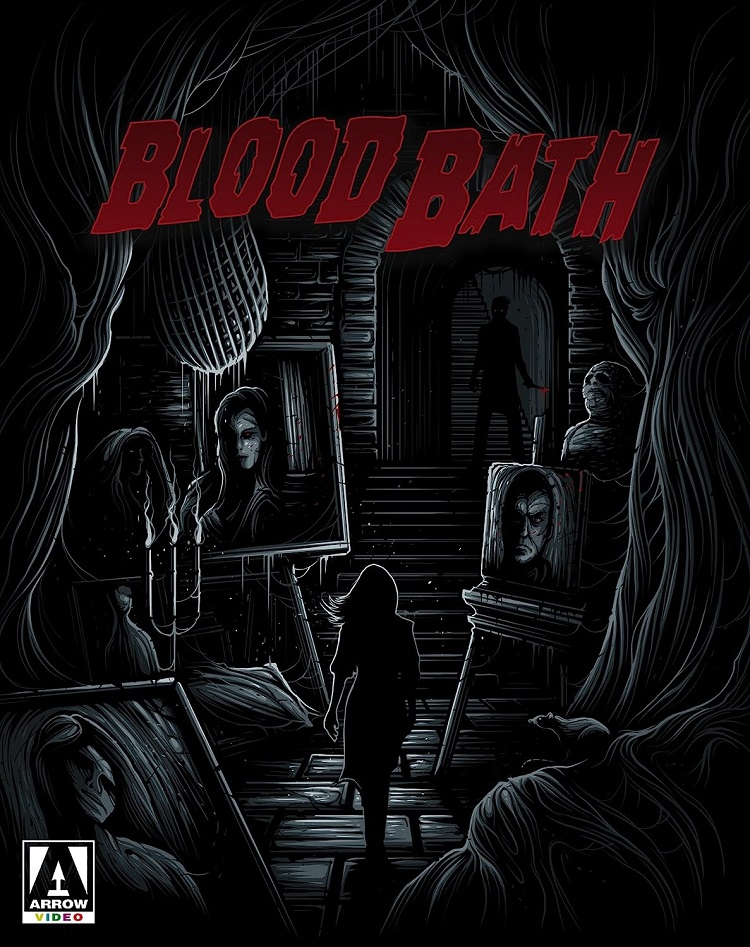
Written by Kristen Lopez
What’s the best from Arrow in June?
The Night Evelyn Came Out of the Grave (1971)
Italian giallo films are an acquired taste that I’m unsure I’ve acquired. The Night Evelyn Came Out of the Grave is one of the more fast-paced and cinematic of the those I’ve watched, but it’s logic remains ill-defined and as messy as the blood-spattered walls at the end. Divided into two halves, things start out with a slash – introducing Lord Alan Cunningham (Anthony Steffen) as a sadistic murderer with a penchant for torturing women with red hair. Alan hopes to purge the inner torment over the loss of his philandering wife, the Evelyn of the title. He eventually marries another woman, where the second half of the film turns into Gaslight, and then the blood starts pouring. Unlike other giallos, the mystery itself is intriguing. Is Alan being haunted by his wife? But it’s hard mustering up anything passing for sympathy for a character we’ve watched maim and murder women for the last half hour. Director Emilio Miraglia does compose some beautiful pastoral shots, but the two disparate sections of the film leave Evelyn half in and out of the grave.
Bloodbath (1963)
Arrow’s two-disc presentation of Bloodbath is a masterclass in editing, illustrating how the same footage, with slight variations and reshoots can create four very different films with the same footage. Operation Titian (1963) is the origin film audiences work with – a film noir/murder mystery from Hungary – and its expert usage of composition and shadows cements its place in the world of noir. Though the acting is stilted, probably more so an issue with the dubbing, the way shots are assembled is simply breathtaking, aided by the Hungarian locations that conjure up an Old World feeling. Director Roger Corman had purchased the original film and added American actors Patrick Macgee and William Campbell, but Corman’s continued dissatisfaction resulted in the film being recut and repackaged as Portrait of Terror (1965). Scenes are reconfigured, new sequences are added in and the film transitions from noir to something between noir and horror. The beautiful opening involving a shadow on a wall is replaced with a dancing girl – from later in the film – and swinging 1960s music more in line with the Corman aesthetic. Portrait of Terror is fine, but if I hadn’t watched Operation Titian, I’d be very confused. The confusion is only enhanced with disc two and Blood Bath (1966). William Campbell returned to film new scenes and the film becomes the story of a vampiric serial killer that takes on aspects of giallo without the color, artistry, and interest. Because so much new material was inserted it’s incredibly easy to suss out which scenes are new and which are recycled. Finally, there’s Track of the Vampire (1967), an extended television version utilizing Blood Bath’s footage. This one was completely nonsensical to me. I recommend watching, in this order, Operation Titian, Blood Bath, Portrait of Terror, and Track of the Vampire. I will say this entire experience was fascinating, watching scenes rearranged like a jigsaw puzzle to create such totally disparate films.
The Red Queen Kills Seven Times (1972)
I wasn’t necessarily interested in watching another Emilio Miraglia-directed giallo after my lackluster response to The Night Evelyn Came Out of the Grave. But, strange as it seems, Miraglia seemingly fixes the flaws his prior film has and turns The Red Queen Kills Seven Times into a compelling and suspenseful murder mystery. The requisite giallo tropes remain: nudity, ketchup-esque blood, and that almost all houses (or, more specifically castles) have a crypt in their basement, usually holding a corpse. In this case the film follows twin sisters and their attempt to break a family curse wherein one sister (the Red Queen) kills six people with the seventh victim being her sister. The current generation of sisters, Kitty and Eveline openly despise each other. But when bodies start piling up at Kitty’s work, it can’t possibly be Eveline because Kitty accidentally killed her years ago! The script actually has thought within it, as the mystery and body count rises in equal measure. Could the killer be the wife of Kitty’s boyfriend/boss? The ghost of Eveline? Eveline herself, alive and well? Unlike other giallos where the climax arrives out of whole cloth, the audience can easily get swept up in the intrigue and the legend that’s put countless sisters at each other’s throats in this family. An unnecessary rape scene threatens to derail everything, but the film looks gorgeous and the mystery pulls off the Gothic horror themes Italian horror films usually try, and fail, to achieve.